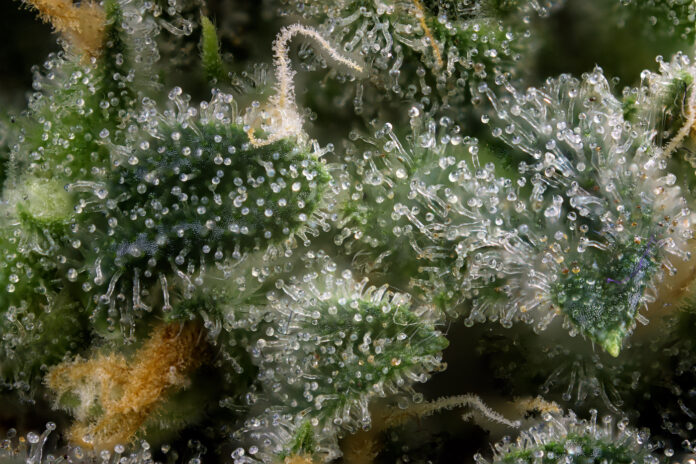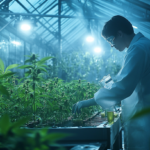Shoppers associate the effects of cannabis with THC, turning the best-known cannabinoid into the most important factor when shopping for flower and related products. As a result of the industry’s push to meet ill-informed consumer demand, the overall quality of product has fallen significantly.
When growers, retailers, and consumers decide to focus strictly on THC content, terpene preservation falls to the wayside. After years of chasing THC, the terpenes in today’s flower are deteriorating at a rapid rate, leaving consumers with a relatively ineffective product by the time it reaches their hands.
With the right guidance and education, consumer demand will eventually reward the growers who shift the way they think about commercial cannabis cultivation, resulting in longer-lasting and more effective products.
Why Is Terpene Preservation so Important for Quality Cannabis?
Most industry professionals are familiar with terpenes, the naturally-occurring compounds that are largely responsible for each cultivar’s vibrant aromas, flavors, and effects.
While terpenes are found in most plants, fruits, vegetables, and pine trees, they play a profound role in differentiating one cannabis strain from the next. Terpenes are what give Blue Dream its sweet, earthy scent and euphoric effects, or provide Purple Kush with its gassy flavor and relaxing reputation.
However, suppose this part of the plant’s makeup isn’t properly cared for from the cultivation field to the point of sale. In that case, the volatile components will deteriorate and consumers will be left with dry, ineffective flower that tastes and smells bland.
“There are six primary terpenes found in cannabis, and the plant primarily produces monoterpenes and sesquiterpenes. Monoterpenes are the most volatile compounds, and if the plant is left at room temperature, those terpenes will volatilize and disappear,” said Alec Dixon, co-founder and director of client relations at SC Labs. According to Dixon, one of the biggest parts of the solution is anything but modern.
“For a farmer, if you’re harvesting acres of cannabis in the midst of peak heat hours, you might have sacrificed about 15 to 20 percent of the terpene content right there on the field. There are all these old wives’ tales around the right time to harvest, like in the middle of the night, and there’s a brilliance to it because terpenes will deteriorate if you don’t put thought into it.”
Unfortunately, the chance for deterioration doesn’t end with thoughtful harvesting, drying, and curing. The cannabis supply chain — which still hasn’t recovered from COVID and other global impacts — is not currently set up in a way that prioritizes terpene preservation, and that needs to change.
“Most farmers are not harvesting in the middle of the night. They’ll do these huge harvests throughout the day, load that cannabis into trucks, and drive it an hour and a half to the nearest location for it to be hung and dried,” said Dixon. “And how much [terpene] loss took place during that time?”
Dixon sees today’s legal market as immature with its reliance on THC to define quality and value, despite the fact that so many of us in the industry understand that one cannabinoid only tells a small part of a far more elaborate and interesting story.
“For farmers and people close to the plant, it’s always been known that terpenes show way more of the plant’s quality than THC content,” said Dixon. “But when overproduction occurs and mass amounts of cannabis are sitting on retail shelves for months at a time, it really exposes the business infrastructure and whether they have the tools to care for and preserve the terpenes in their possession.”
According to Dixon, roughly 60 to 90 percent of a plant’s terpene content is lost by the time it enters the hands of a processor or distributor, and much of what remains will deteriorate before it reaches the consumer.
To Remain Competitive, Terpenes Must Be King
The need for a stronger emphasis on terpene preservation isn’t a nascent or unjustified theory. SC Labs regularly handles product testing for the Emerald Cup, and they’ve recently begun grouping the entries by terpene content to see what sort of effect it might have.
“If you look at the average cannabinoid content of the top 20 winners, it has nothing to do with the selection. But if you look at terpene content, you can always see it’s at least one to two standard deviations higher in the winners,” said Dixon. “It really shows, in an event where the highest level of expert cannabis sommeliers are blindly testing and judging products, that terpene content is much more of an indicator of what the judge will pick as a winner.”
Dixon believes the industry needs to pay closer attention to this issue before it’s too late, especially as the market deepens its saturation with a majority of brands trying to do the same thing.
“It’s important that we tell another story and fight for craft cannabis in this way. If the industry can’t get together on this idea, we’ll see the same thing that happened with alcohol. There will be a 30 to 40-year progression of cannabis consolidation with a few big brands at the top, until the market gets her head out of her ass and fights for terpene content as a defining factor,” said Dixon. “Otherwise, craft cannabis will reemerge in 80 years, when the market finally gets a better grasp on what really matters. I’m just hoping it doesn’t go that way.”
Fortunately, inefficiencies among the largest producers in any market present disruptive opportunities for everyone else. In cannabis, craft cannabis farmers stand to gain a much stronger foothold by focusing their efforts on preserving the fruits of their labor from the farm to the consumer’s front door.
“Cannabis requires and deserves a continued supply chain. The product should be moved immediately and temperature-and-humidity-controlled every step of the way,” Dixon said. “When oversaturation in the market occurs, it’s the perfect opportunity for a craft farmer to level up the entire supply chain by placing emphasis on terpene content. It’s essential for more cultivators to understand that terpene cultivation and preservation are absolutely defining factors when competing against Goliath.”













[…] to Alec Dixon of SC Labs, 60 to 90% of the terpenes are lost by the time cannabis buds reach the processor or distributor. This loss can be avoided by pressing live bubble hash. Live bubble hash is bubble hash that’s […]
[…] out the material components and chemical compounds you desire. So it pulls what you want, like the terpenes, flavonoids, CBD, THC, all the cannabinoids, and it leaves behind what you don’t want, like […]
[…] like lemons or cherries, Pink Jesus is harder to categorize and more open to interpretation. Her terpene profile and bouquet are myrcene and lavender dominant, but each smell adds more nuance, new notes, and […]
[…] mold and bacteria. Controlling temperature and humidity during the drying process to maximize terpene and cannabinoid preservation is a delicate art form. While the post-harvest period can feel like a chore or expensive waiting […]
[…] only does oxidation result in discoloration, but it also impacts terpenes and flavor—and more complex oils like live resin and rosins are likely to oxidize sooner in […]
[…] The latest way to address bud rot is known as cannabis remediation: a budding approach that claims to remove all traces of mold, pathogens, and bacteria from cannabis leaves and buds through vacuuming, steam cleaning, UV light, ozone shock, and radiation sanitizing. However, it’s understandably controversial and still in its early stages of development. In addition, remediation can be expensive and negatively affect the bud’s flavor, potency, and terpenes. […]
[…] like cannabis coconut oil, cannabutter, or herbal teas. Again, these leaves can still contain some valuable trichomes and cannabinoids if they’ve been kept in good health, which can result in some pretty powerful […]
[…] – Law-enforcement agents seized nearly 5.7 million cultivated cannabis plants in 2022—the highest total since 2011—according to annual data compiled by the U.S. Drug […]